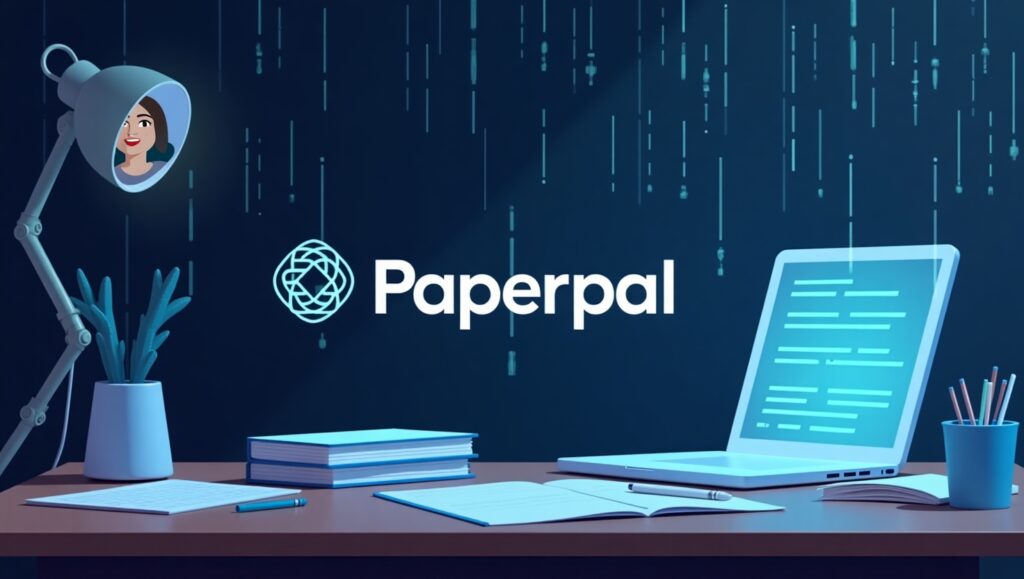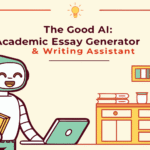
Academic writing demands precision, clarity, and adherence to strict formatting standards. Whether you’re crafting a research paper, thesis, or journal submission, the pressure to produce flawless work can be overwhelming. Enter Paperpal, an AI-powered academic writing assistant designed specifically for researchers, students, and academics who need more than basic grammar checking.
Unlike general writing tools, Paperpal understands the unique requirements of scholarly communication. From complex citation formats to discipline-specific terminology, this platform promises to streamline the academic writing process while maintaining the rigor that scholarly work demands.
But does Paperpal live up to its claims? This comprehensive review examines the platform’s features, performance, and value proposition to help you determine whether it’s the right tool for your academic writing needs.
What is Paperpal?
Paperpal is an AI-driven writing assistant created by Cactus Communications, a company with over two decades of experience supporting academic researchers. The platform combines advanced language processing technology with deep understanding of academic conventions to offer comprehensive writing support.
The tool goes beyond basic grammar and spell-checking to provide context-aware suggestions that consider academic tone, clarity, and formatting requirements. Paperpal supports multiple academic disciplines and integrates seamlessly with popular writing platforms like Microsoft Word and Google Docs.
What sets Paperpal apart is its focus on the entire academic writing workflow. The platform doesn’t just correct errors—it helps researchers communicate their ideas more effectively while ensuring their work meets publication standards.
Key Features and Capabilities
Grammar and Language Enhancement
Paperpal’s grammar checking capabilities extend far beyond simple spell-check functions. The AI analyzes sentence structure, identifies awkward phrasing, and suggests improvements that enhance readability without compromising academic rigor.
The platform excels at catching subtle errors that other tools might miss, such as subject-verb disagreements in complex sentences or inappropriate preposition usage. It also provides explanations for suggested changes, helping users understand why certain corrections improve their writing.
Academic Tone and Style Optimization
One of Paperpal’s strongest features is its ability to maintain appropriate academic tone throughout documents. The AI recognizes when language is too casual or conversational for scholarly work and suggests more formal alternatives.
The tool also helps maintain consistency in terminology and phrasing, which is crucial for lengthy research papers. It can identify instances where you’ve used different terms for the same concept and suggest standardization.
Citation and Reference Support
Paperpal integrates citation management into its workflow, helping ensure that references follow proper formatting guidelines. While it doesn’t replace dedicated citation managers like Zotero or Mendeley, it can identify formatting inconsistencies and missing elements in citations.
The platform supports major citation styles including APA, MLA, and Chicago, making it valuable for researchers across different disciplines. It can also flag potential issues with in-text citations and reference lists.
Plagiarism Detection
The platform includes plagiarism checking capabilities that scan documents against academic databases and published sources. While not as comprehensive as dedicated plagiarism checkers like Turnitin, it provides a useful preliminary screening for potential issues.
This feature is particularly valuable for researchers who want to ensure their paraphrasing is sufficiently original and that all sources are properly attributed.
Research and Writing Insights
Paperpal offers analytics and insights about your writing patterns, helping identify areas for improvement. These insights can reveal tendencies like overuse of passive voice, excessive jargon, or inconsistent terminology.
The platform also provides readability scores and suggestions for improving document flow and coherence, which can be especially helpful for non-native English speakers.
Performance and Accuracy
Language Processing Quality
Paperpal demonstrates strong performance in identifying and correcting grammatical errors, particularly those common in academic writing. The AI shows good understanding of complex sentence structures and technical terminology across various disciplines.
However, like all AI tools, it occasionally suggests changes that may not be appropriate for specific contexts. Users should review suggestions carefully, especially when dealing with highly specialized terminology or unconventional but correct usage.
Speed and Efficiency
The platform processes documents quickly, even lengthy research papers with complex formatting. Real-time suggestions appear as you write, though you can also run comprehensive checks on completed documents.
Integration with Microsoft Word and Google Docs is smooth, with minimal impact on document performance or formatting.
Discipline-Specific Understanding
Paperpal shows impressive capability in handling terminology and conventions across different academic fields. Whether you’re writing in the sciences, humanities, or social sciences, the tool generally provides relevant and appropriate suggestions.
The platform’s ability to recognize and preserve technical terms while still offering style improvements is particularly noteworthy.
User Experience and Interface
Ease of Use
Paperpal’s interface is intuitive and uncluttered, making it accessible to users regardless of their technical expertise. The web-based editor is clean and functional, while the Word and Google Docs integrations feel natural and unobtrusive.
Setup is straightforward, and the platform provides helpful onboarding materials for new users. The learning curve is minimal, allowing researchers to start benefiting from the tool immediately.
Customization Options
Users can adjust settings to match their specific needs, including preferred citation styles, discipline-specific terminology preferences, and writing goals. The platform remembers these preferences across sessions, streamlining the writing process.
Collaboration Features
Paperpal includes basic collaboration features that allow multiple users to review and comment on documents. While not as robust as dedicated collaboration platforms, these features are sufficient for most academic writing projects.
Pricing and Value Proposition
Paperpal offers both free and premium tiers, with the free version providing basic grammar checking and limited features. The premium subscription unlocks advanced capabilities including comprehensive plagiarism checking, unlimited document processing, and priority support.
For academic researchers, particularly those working on high-stakes publications, the premium features often justify the subscription cost. The time saved on editing and revision, combined with improved writing quality, can significantly impact research productivity.
Students and early-career researchers may find the free tier sufficient for basic needs, with the option to upgrade for important submissions or publications.
Limitations and Considerations
Context Understanding
While Paperpal performs well overall, it occasionally struggles with highly specialized or emerging terminology. Users working in cutting-edge fields may need to manually override some suggestions.
The AI also sometimes suggests changes that, while grammatically correct, may alter the intended meaning or emphasis. Careful review of suggestions remains essential.
Integration Limitations
Though Paperpal integrates with popular writing platforms, it doesn’t work with all academic writing tools. Researchers using specialized software like LaTeX may need to export their documents for checking.
Learning Curve for Advanced Features
While basic features are intuitive, some advanced capabilities require time to master fully. Users may need to invest effort in customizing settings and understanding all available features.
Who Should Use Paperpal?
Paperpal is particularly valuable for non-native English speakers who need to ensure their academic writing meets native-level standards. The tool’s ability to suggest more natural phrasing while maintaining academic tone makes it invaluable for this audience.
Graduate students working on theses or dissertations can benefit significantly from Paperpal’s comprehensive checking capabilities. The platform helps ensure that lengthy documents maintain consistency and quality throughout.
Established researchers preparing manuscripts for publication will find Paperpal’s advanced features particularly useful. The combination of style checking, citation support, and plagiarism detection can streamline the submission preparation process.
Ready to Enhance Your Academic Writing?
Paperpal represents a significant advancement in AI-powered writing assistance for academic contexts. Its combination of sophisticated grammar checking, style optimization, and academic-specific features makes it a valuable tool for researchers at all levels.
While no writing assistant can replace careful human review and subject matter expertise, Paperpal can significantly improve the efficiency and quality of the academic writing process. For researchers looking to enhance their writing while saving time on revision, Paperpal offers compelling value.
The platform’s free tier provides an excellent opportunity to test its capabilities before committing to a subscription. Whether you’re a graduate student working on your first major research paper or an established academic preparing for publication, Paperpal deserves consideration as part of your writing toolkit.

I am Ray Jones Digital
My current occupations: a Digital Marketer, Local SEO expert, Link Builder, and WordPress SEO specialist. Shopify SEO, Ecommerce Store Management, and HTML & WordPress Developer I have been practicing the above mentioned services for more than 10 years now As an SEO expert working with your ongoing projects.



